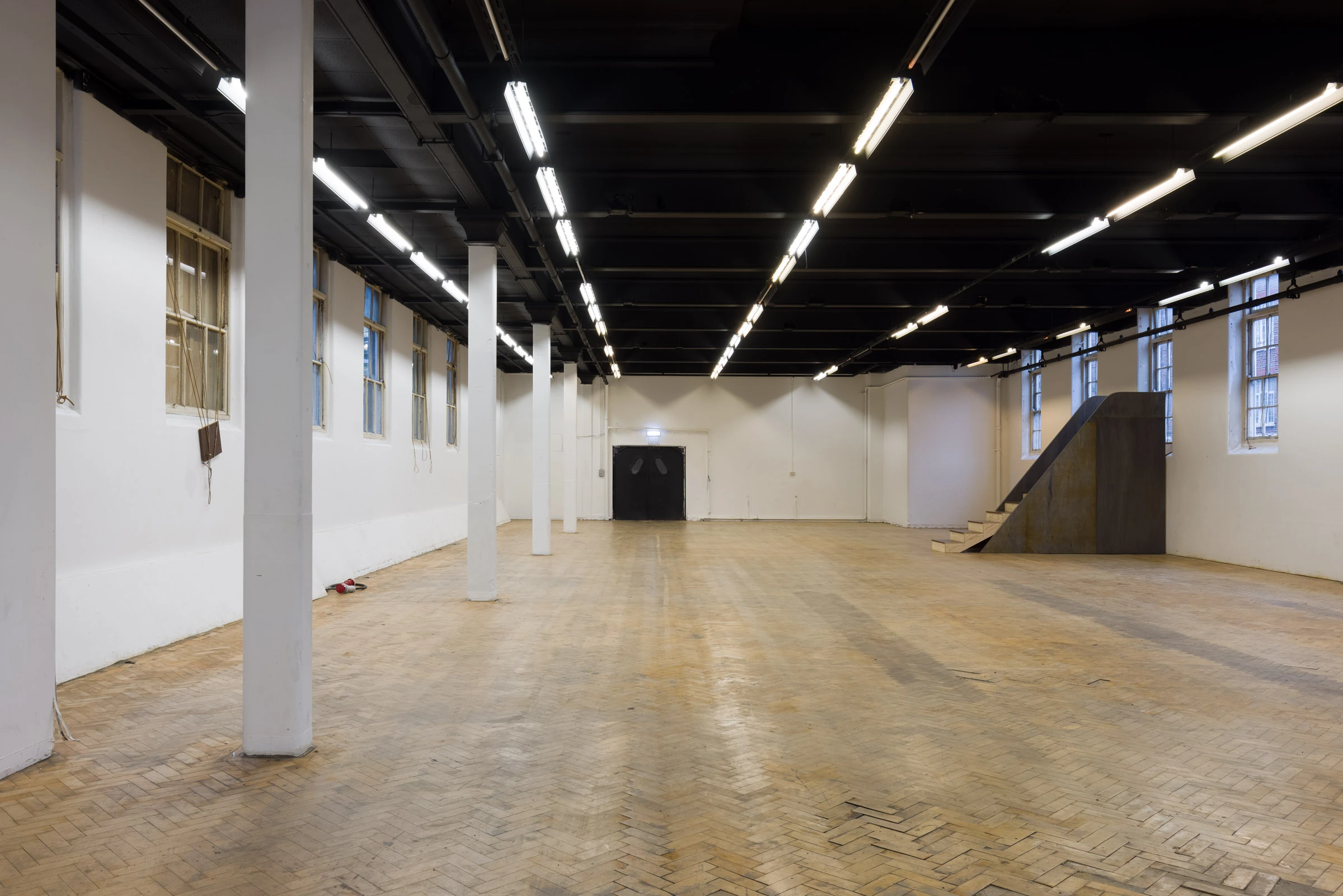Ouranophobia

Installation view of Ouranophobia by Abbas Zahedi at the old Chelsea Sorting Office. Courtesy: Belmacz
I called this show ‘Ouranophobia’, meaning ‘fear of heaven or the sky’. I grew up with a certain religious consciousness where I had to constantly transact with cosmic authorities that occupy a space above at all times. It’s a negotiation I had to make in terms of how much I was going to ascribe to, and be dictated by, those kinds of myths and narratives that come down from ‘heaven’. Even when I tried to sidestep specific doctrines, I realised I was recreating the same dynamic whilst putting my energy into seemingly secular spaces, such as community organising, or even within the art world. I came to feel that I was stuck in some sort of metaphysical bind, and so being in this building, with the way the architecture enforces a similar hierarchy based around the control of sight and visibility — that really helped me to externalise the phenomenology of that process. Like how the layout of a space can function like a subtle form of hypnosis, a sort of micro-dosing of metaphysics. And this then raised the question: how do I develop a sense of place in the cosmos, when all I can rely on is the ground beneath my feet? I have to draw my existential sustenance and stability from the earth, or from common materials which I have access to for my work. That’s the way we as artists produce meaning in the world, or interrogate the processes of how meanings are produced. In this case again, the work tends to have a personal dimension alongside a strong aesthetic and discursive agenda. And still, I’m not creating something to be part of a wider theoretical context or for some notion of a canon, I just consider myself in the mix of things — doing different things, and things that need doing. It’s literally me trying to ground myself, because I feel like I’ve never had a healthy relationship with ‘heaven’, with the thing that is always meant to be above, or this idea of a Platonic ideal. And since I lost my family, I can’t always rely on vertical structures that have looked down on me from a position of self-assured grandeur. I’ve often struggled with that. I’ve struggled when I’ve been deferential towards it, and also when I’ve had to rebel. Being in longterm therapy allowed me to become more curious about all this, and develop a kind of interiority and resourcefulness to seek out what I need, in order to feel held and secure whilst staying down here, where all the feelings are. ‘Manna from below’ is my way of trying to say all that. It’s like I’m trying to create these ‘paracosms’ or alternative realities for my own inner community of alter egos, and relate that to the world around me somehow. That’s my art. It reminds me of what Hannah Arendt talks about in terms of having a two-in-one dialogue with ourselves, and learning to think with our emotions and sensual experiences of the world. I think the practices of religion and art are both aware of that at a fundamental level, but they respond to it in opposing ways. As in, they both create boundaried notions of an idealised space that either prevents or encourages us to trust our own sensual experiences of a ‘world in common’. I find it interesting that Arendt traces that bind back to Descartes; it’s like at some point we sacrificed the commonalities of a sensual earth, in terms of materials, affect, and physical space, all for the heavenly security of an echo-chamber and binary codes. I spent many years creating safe-spaces when I was doing community organising and then I had to exit them all one by one, because I would always outgrow them. So the idea of exiting becomes relevant here too, where you have this hierarchy inherent in the design of the space. It functions on a mental level as well as a physical one, which is why I made the steps go up to the window, to offer a different perspective rather than an explicit escape. It reminds me of that self-awareness technique called the Johari Window. I feel like I’m addressing that idea of the exhibition space as its own paracosm and then embracing that — because I need that space — whilst at the same time looking for an exit, or a way to break what Hal Foster calls ‘the impulse to archive’, which I feel is just artspeak for finding an afterlife. So when it comes to visitors of the show, I am extending a genuine invitation to this whole process, or just a part of it, hence why everything is ambiguous and left up to the agency of each individual to participate, so as to give space for that sensual navigation, that combination of minimalism and emotion. Lockdown has heightened the opportunity to work in this way and I’m trying to make an experience that allows us to reflect on that as well. It has created a kind of Kleinian dynamic in terms of object-relations and how we perceive one another, yet I like to think of it more simply as just being a good host and trying to be generous with whatever I have to give to the situation; like a good conversation that gives you space to think and be yourself.
